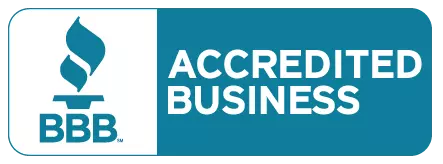Keyword Research for Google Ads: Step-by-Step Guide
Learn how to find the right keywords, organize them into ad groups, and use match types and negatives to drive qualified traffic and higher ROAS.
Why Keyword Research Matters in Google Ads
Keyword research is the backbone of every successful Google Ads campaign.
It determines who sees your ads, how much you pay per click, and how effectively you convert visitors into customers.
1. Understanding Keyword Intent
Before adding keywords to your campaigns, you must understand why people search.
2. Navigational Intent
Users are looking for a specific brand or website.
Example: “Unionaire washing machines website.”
→ Limited ad potential unless you’re defending brand terms.
3. Transactional (Commercial) Intent
Users are ready to buy or take action.
Example: “buy Turkish coffee beans online.”
→ Highest conversion rate and ideal for paid search.
Pro Tip: Focus your Google Ads keyword list on transactional and high-intent queries for better ROI.
Step-by-Step Keyword Research Process
Step 1 — Start with Seed Keywords
Seed keywords are your product or service basics.
Example: Turkish coffee, espresso machine, home appliances, gold jewelry, sunglasses online.
Use these as starting points in tools like:
-
Google Keyword Planner
-
SEMrush or Ahrefs
-
Google Search Console (for existing traffic data)
Step 2 — Expand Your Keyword List
Use these methods:
-
Google Suggestions & “People Also Ask”
-
Competitor research — type your keyword and note which ads appear.
-
Keyword Planner filters — by country (Egypt, UAE, KSA, UK, USA), device, and language.
Group your findings by themes:
-
Product type (e.g., Turkish Coffee, Espresso Beans)
-
Customer need (e.g., buy online, best price, fast delivery)
-
Brand or category (e.g., Brown Hills coffee, Unionaire ACs).
Step 3 — Analyze Search Volume & CPC
In Keyword Planner, note:
-
Avg. Monthly Searches: to gauge demand.
-
Competition Level: Low, Medium, or High.
-
Suggested Bid / CPC: to estimate ad cost.
Balance high-volume + affordable CPC for best results.
Step 4 — Understand Match Types
Match types control how closely a user’s search must match your keyword.
| Match Type | Example Keyword | Triggers Ad When Search Includes | Use Case |
|---|---|---|---|
| Broad Match | women shoes | Similar terms, synonyms | Awareness & testing |
| Phrase Match | “women shoes” | That exact phrase + close variants | Balanced control |
| Exact Match | [women shoes] | Exact phrase only | High-intent targeting |
Pro Tip: Combine phrase + exact match for precision and scale.
Step 5 — Add Negative Keywords
Negative keywords prevent your ad from showing on irrelevant searches.
Example: free, cheap, jobs, how to
Add negatives regularly based on the Search Terms Report in Google Ads.
Step 6 — Group Keywords by Ad Group
Each Ad Group should contain closely related keywords and a dedicated ad message.
Example:
-
Ad Group 1: Buy Turkish Coffee
-
Ad Group 2: Buy Espresso Beans
This improves Quality Score and CTR, lowering your CPC.
Step 7 — Prioritize by ROI
Not all keywords perform equally.
Focus budget on:
-
High-intent, high-CTR keywords.
-
Low-CPC keywords that still convert.
-
Long-tail keywords (3–5 words) with commercial intent.
Tools for Keyword Research
-
Google Keyword Planner (free)
-
SEMrush / Ahrefs (competitive data + intent)
-
Ubersuggest (affordable for small teams)
-
Google Trends (seasonality)
-
Search Console (your current ranking keywords)
Advanced Keyword Tips from The Commerce Gear
-
Use location modifiers — “in Cairo,” “in Dubai,” etc., for geo-targeted intent.
-
Analyze competitor ad copies — spot keyword gaps.
-
Leverage Dynamic Search Ads (DSA) — to automatically find new search terms.
-
Build separate campaigns for brand vs. non-brand keywords.
-
Regularly review the Search Terms Report to discover new opportunities.
Common Keyword Research Mistakes
-
Targeting too broad keywords.
-
Ignoring negative keywords.
-
Copying competitors blindly.
-
Mixing different intents in one ad group.
-
Not updating keyword lists monthly.
Avoiding these mistakes can save up to 30–40% of wasted ad spend.
FAQs — Keyword Research for Google Ads
Q1: What is the best free keyword tool for Google Ads?
A: Google Keyword Planner is free and directly integrated into Google Ads, offering accurate search volume and CPC data.
Q2: How many keywords should I use per ad group?
A: Ideally 5–15 closely related keywords per ad group. Too many reduces ad relevance and Quality Score.
Q3: What are negative keywords in Google Ads?
A: These are terms you exclude so your ad doesn’t show for irrelevant searches, preventing wasted clicks.
Q4: Should I target competitor brand names?
A: You can, but be cautious — it often increases CPC and can lead to low Quality Scores. Use it strategically.
Q5: How often should I update my keyword list?
A: Review performance and search terms every 2–4 weeks to remove underperformers and add new high-intent keywords.
Conclusion — Build a Keyword Strategy That Converts
Effective keyword research isn’t about collecting hundreds of terms; it’s about finding the right few that bring profitable traffic.
At The Commerce Gear, we create data-driven keyword strategies that boost conversions, reduce CPC, and scale ROAS for brands across Egypt, GCC, and international markets.
📩 Optimize Your Campaigns Today
Let our Google Ads experts analyze your current keyword strategy and reveal how to reduce wasted spend and increase conversions.
👉 Contact The Commerce Gear




